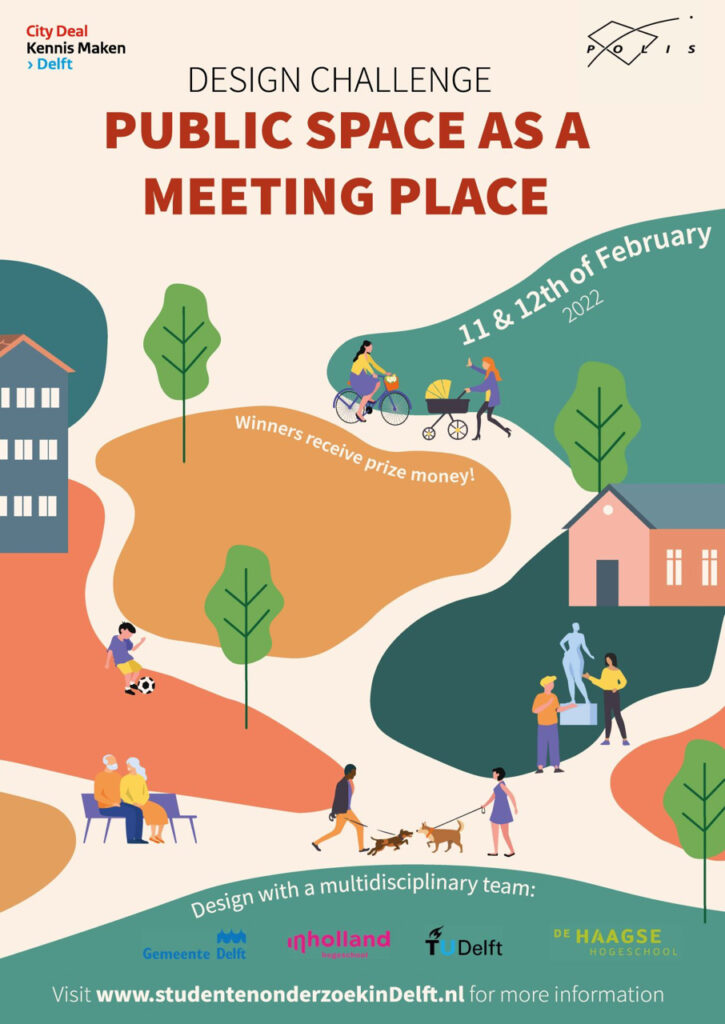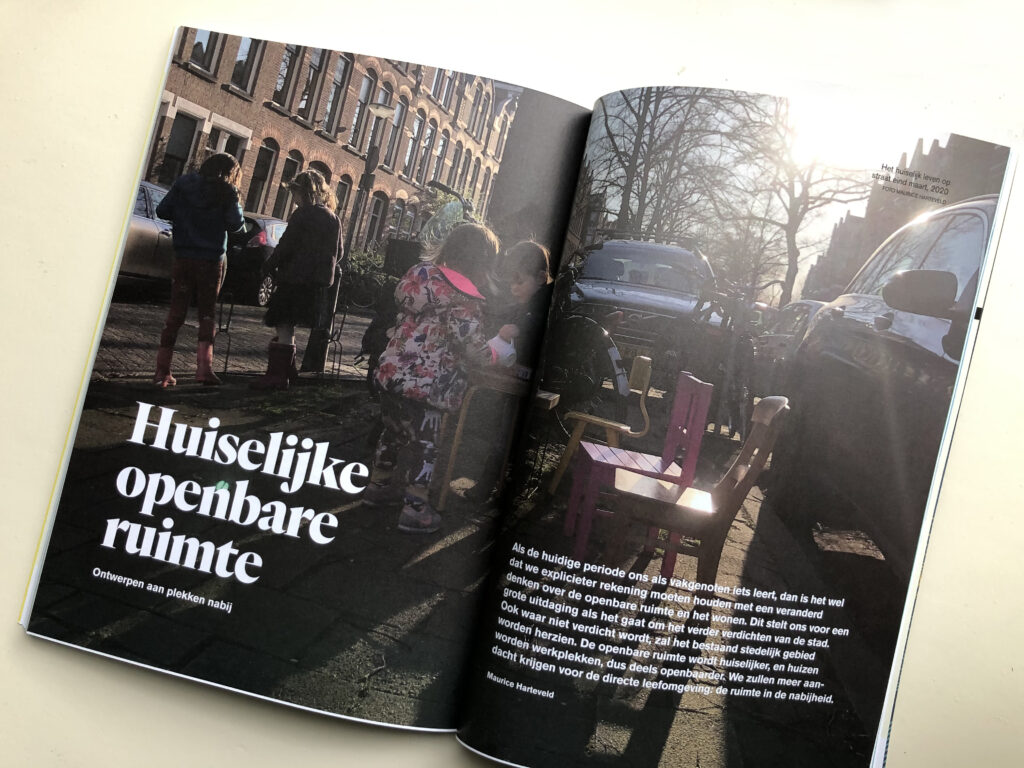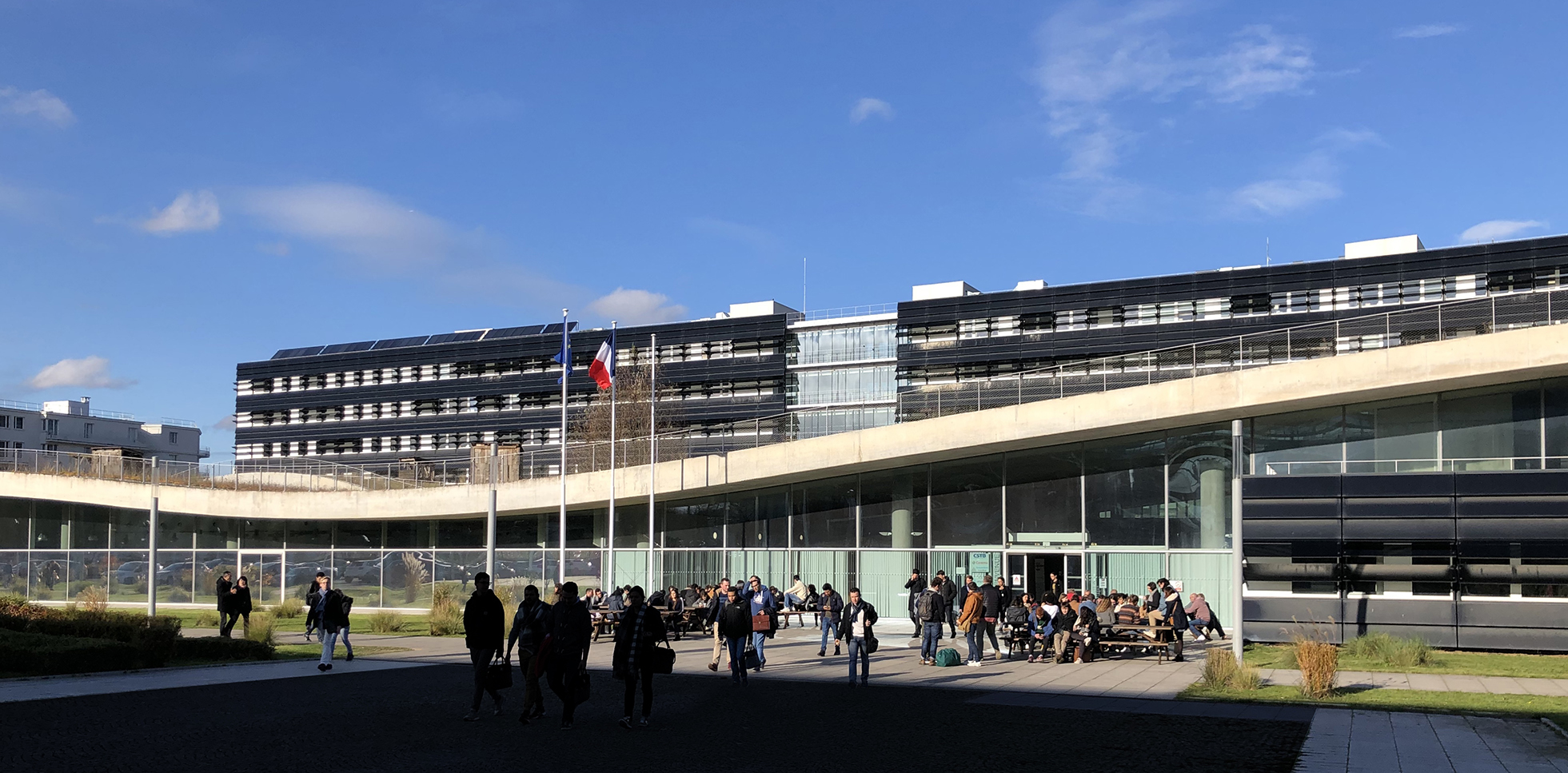How to Design Public Space for Maritime Mindsets? That’s a central question in the new Minor ‘Minor (Re)Imagining Port Cities: Understanding Space, Society, and Culture’.
Tag Archives: public sphere
Designing Domestic Places
| Public space is the place to play, move and meet. This applies to our rich city center with all its shops and restaurants, but just as much to residential areas. But how can we make these public spaces even more attractive for all types of users? At the beginning of February, students from TU Delft, The Hague University of Applied Sciences, and Inholland University of Applied Sciences developed various ideas for the public space in the Tanthof district. In various teams, the students have investigated how existing routes or routes to be designed can be provided with ‘stopping points’: places where you can rest for a while, look around and chat with other residents. During this meeting of Delft Design, these design sketches will be briefly explained and we would like to discuss these design sketches with you and, among others, Tako Postma (City Architect of Delft), Eveline Berghout – van der Schee (urban designer, City of Delft), Maurice Harteveld (researcher, Design of Public Spaces, TU Delft), Ben Kuipers (landscape architect) and Flip Krabbendam ( architect) in a discussion about the preconditions for successful public space. The discussion starts with a lecture on Designing Domestic Places by Maurice Harteveld Afterward, there is an opportunity to chat and view the different designs. This while enjoying a snack and drink. The challenge is organized by Delft Design in collaboration with the City Deal Kennis Maken Delft, study association POLIS and architect Flip Krabbendam. | De openbare ruimte is dé plek voor spelen, bewegen én ontmoeten. Dat geldt voor onze rijke binnenstad met al zijn winkels en horeca, maar even zo goed voor woonwijken. Maar hoe kunnen we deze publieke ruimten nog aantrekkelijker maken voor alle type gebruikers? Begin februari hebben studenten van de TU Delft, De Haagse Hogeschool en Hogeschool Inholland verschillende ideeën uitgewerkt voor de openbare ruimte in de wijk Tanthof. In verschillende teams hebben de studenten onderzocht hoe bestaande of nieuw te ontwerpen routes kunnen worden voorzien van ‘halteplaatsen’: plekken waar men even kan uitrusten, kan rondkijken en een praatje kan maken met andere bewoners. Tijdens deze bijeenkomst van Delft Design worden deze ontwerpschetsen kort toegelicht en gaan we graag met u en onder andere Tako Postma (stadsbouwmeester van Delft), Eveline Berghout – van der Schee (stedebouwkundige. City of Delft), Maurice Harteveld (onderzoeker, Design of Public Spaces, TU Delft), Ben Kuipers (landschapsarchitect) en Flip Krabbendam (architect) in gesprek over de randvoorwaarden van succesvolle openbare ruimte. De discussie wordt geopend met een lezing over Het Ontwerpen van Huiselijke Plekken door Maurice Harteveld Na afloop is er gelegenheid tot napraten en het bekijken van de verschillende ontwerpen. Dit onder het genot van een hapje en drankje. De challenge wordt georganiseerd door Delft Design in samenwerking met de City Deal Kennis Maken Delft, studievereniging POLIS en architect Flip Krabbendam. |
The Public Space as Meeting Place
De Openbare Ruimte als Ontmoetingsplek
where:
Prinsenkwartier en online
when:
2 March 2020
open 19.30, start 20.00 untill 22.00
Design Challenge for Students
City Deal ‘Kowlegde Making Delft’ is organising a challenge about the use and design of public space for ambitious students who would like to push their boundaries. How can we make the public space more attractive for all types of users as a place to play, move and to meet?

More: Design Challenge: Public Space as a Meeting Place
Partners:
the Municipality of Delft
The Hague University of Applied Sciences
Inholland University of Applied Sciences
Delft University of Technology
Delft Design
Stress Reduction and Healing
Rosalie Moesker, an urban designer in training in our team, makes the cross-over to health. As the campus of Erasmus Medical Centre densifies, not only accessibility is at stake, more so, the human experience while traveling. In the city of the future, the medical centre needs new mobility concepts. When we design for these, we can relieve users of worries by reducing urban stress at their arrival, and rethinking public space as a healing environment during stay.
source: TV Rijnmond, Tuesday, November 16, 17:35
Continue reading
Empowering Resilient Communities
Resilient Communities | Comunità Resilienti
Following earlier presentations of the Design of Public Space research group from Delft, Maurice Harteveld participates in the ‘Empowering Resilient Communities’ event organised at the Italian Pavilion at the 14th International Architecture Exhibition in Venice, on Friday 12 November, from 2 pm. As part of the international scientific committee of the pavilion, he will reflect on various Italian projects, which will be presented in this session. His review relates to a broader inventory of actions, which are being currently taken in the networks of public space to strengthen community resilience. Rotterdam serves as an exemplar, and as such these actions challenge the design of public space, and with that among others the disciplines of urban design, landscape architecture, and architecture.
The Italian Pavilion has organised the event as an opportunity to present and discuss some of the experiences already included in the research project Mapping Resilient Communities, while providing a platform for knowledge transfer and capacity development, especially in most vulnerable areas, in Italy and beyond, with the participation of UN-Habitat.
when:
Friday 12 November
14:00-17:00h
where:
17th International Architecture Exhibition
Italian Pavilion
Venice
Continue reading
Shaping Resilient Communities
Resilient Communities | Comunità Resilienti
With the event, the Italian Pavilion aims to raise awareness on urban resilience, from the environmental, economic, and social point of view, in relation to the 17 Sustainable Development Goals of the 2030 Agenda, on the occasion of Urban October promoted by UN-Habitat. The event has also been scheduled on the occasion of the UN75 celebrations before the Venice Biennale was postponed last year due to the COVID-19 pandemic.
An expert from the Joint Research Center of the European Commission will introduce the Agenda 2030, and invited Italian speakers will present case studies, which already are included in the research project Mapping Resilient Communities – co-created by professionals and urban activists who have experimented and implemented multidisciplinary practices of resilience in Italy and abroad. The event includes a thematic session coordinated by TU Delft, Netherlands, with professors and students affiliated to the Design of Public Spaces Research Group. Finally, a round table discussion is planned with the involvement of the audience attending the live streaming.

when:
Friday 6 October
14:00-17:00h
where:
17th International Architecture Exhibition
Italian Pavilion
Venice
Continue reading
Digital, Virtual, and Physical
Physical Public Space X Virtual Space
Urban designers and landscape architects observe physical public spaces as spaces that are able to accommodate accidental meetings, reveal places’ identity, provide impulsive on-the-spot choices, and allow human-nature interaction through wind or sunshine. However, the recent crisis unfolds the intertwining between physical public space and virtual space. During two days, we focus on the shift of the planner’s outlook on physical public space and virtual space.
Join the webinars!
When: Thursday, November 5 and 6, 9.00am – 6.00pm CET
> Registration
Bits of Public Space 3.0: Trailer, published by Polis on YouTube
Video credits: Ioanna Kokkona
Continue reading
Domestic Public Space
If the current period teaches us, as colleagues, anything explicitly, it is that we must take account of a changed way of thinking on public space and housing. This shift presents us with a major challenge when it comes to further densification of the city. The existing urban fabric needs revision, even in areas where there is no increase in density. Public space is becoming more homely, and houses are becoming workplaces, so partly more public. We will pay more attention to the immediate living environment: the space in the vicinity.

Read the article in Dutch:
Harteveld, Maurice (2020, October) Huiselijke Openbare Ruimte. Ontwerpen aan Plekken Nabij. In: Ruimte + Wonen. #3/2020 Thema Publieke Ruimte, 101e Jaargang, Nummer 3, October 2020, pp. 72-79
Ruimte + Wonen is a Dutch magazine and knowledge network for spatial professionals and housing experts, originated from the magazines S+RO and Tijdschrift voor de Volkshuisvesting. Go to ‘Ruimte + Wonen’ membership
Public Space under COVID-19

TU Delft Joins ‘2020: A Year without Public Space under the COVID-19 Pandemic’
Social distance dictated by COVID-19 health emergency affects access to public space and with it creating a range of impacts on different levels. While global lockdown is destabilizing economy and challenging country leaders, at the human level the pandemic is generating isolation and loneliness, with a significant raise of helplessness and fear. Everyone is asked to stay home and rearrange daily routines and work activities in indoor domestic spaces, looking at the world from behind a window. People are dying alone, numbers are increasingly high. Outdoor physical activities are no longer allowed. Many governments seem to lack proper strategies to manage the risk of massive contagion. In the Global South the poor living in informal settlements have scarce access to water, washing hands could be dangerously impossible.
What is the future of public space? How can we face this unprecedented emergency and get prepared to its consequences, in specific regard to health disparity? Will public space restrictions stay in place after recovering from the pandemic?
Is there something we can do now all, together? Delft University of Technology, a worldwide recognised leader in the field of urban design and public space, unites with more than twenty universities globally in the ‘2020: A Year without Public Space under the COVID-19 Pandemic’ initiative. DDfV researcher Maurice Harteveld explains:
“We observe differences in behaviour in public space under the current circumstances. Differences that relate to different societal and personal priorities based on different social and personal values. Altered patterns in our cities are updating the way human behaviour informs urban design, hence the design of public space, but foremost the emerging differentiation in values effect in the design choices we are making in the near future.”
People, Movement & Public Space
Improving our ways to urbanise and innovate urbanisation processes are needed in order to meet the UN Sustainable Development Goals, hence deliver the Quito New Urban Agenda promise. During the Future Days event, participants renewed the listing of urban topics. They bridge the gaps between academics and practitioner. They have presented much more evidence-based policies at the global level and with local examples and test-beds. And, they generated a better understanding of the driving forces of urbanisation and of the needs for better regulating the processes.

People, Movement and Public Space
In a keynote at the Future Days 2019 event, themed ‘Legacy and Future of our Cities’, I illuminated the interdisciplinary topic ‘people, movement and public space’, in order to understand assembled complexities of cities which go along with this topic. I introduced a four-step approach: First, a network-theoretical approach in the analyses of path systems, aiming to understand the complex dynamic systems of real cities better. Second, the analyses of personal perspectives on these paths apply more a non-linear approach to understand complex trajectories and interactions in reality. Third, engaged with the human-adaptive approach, analysing the psychology of place helps to understand patterns in the evolutionary inter-subjectivity of being in cities. Lastly, by observing public life, understanding the emergence of life in real cities, and non-equilibria, may be understand from a self-organising approach.
Continue reading
